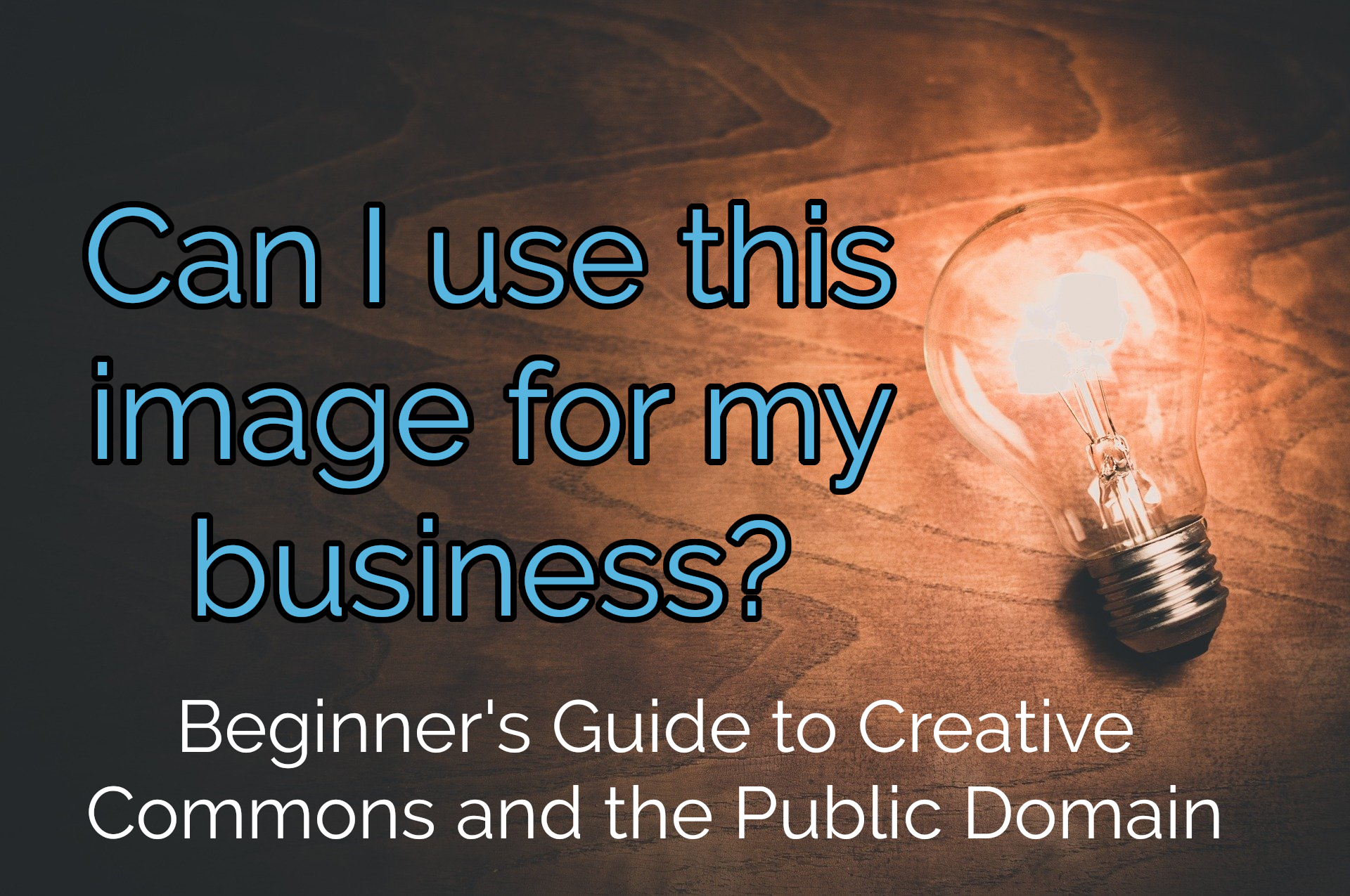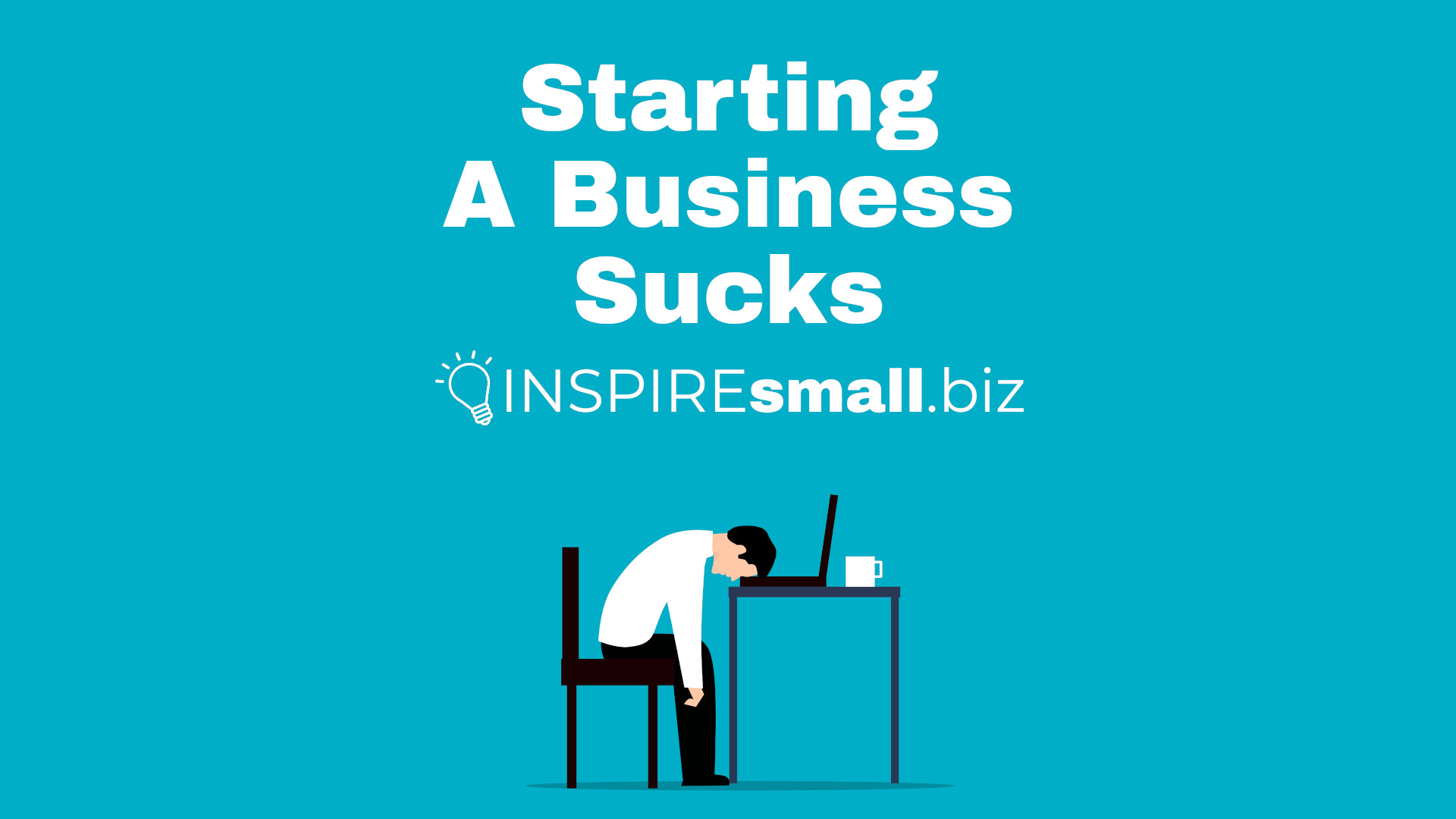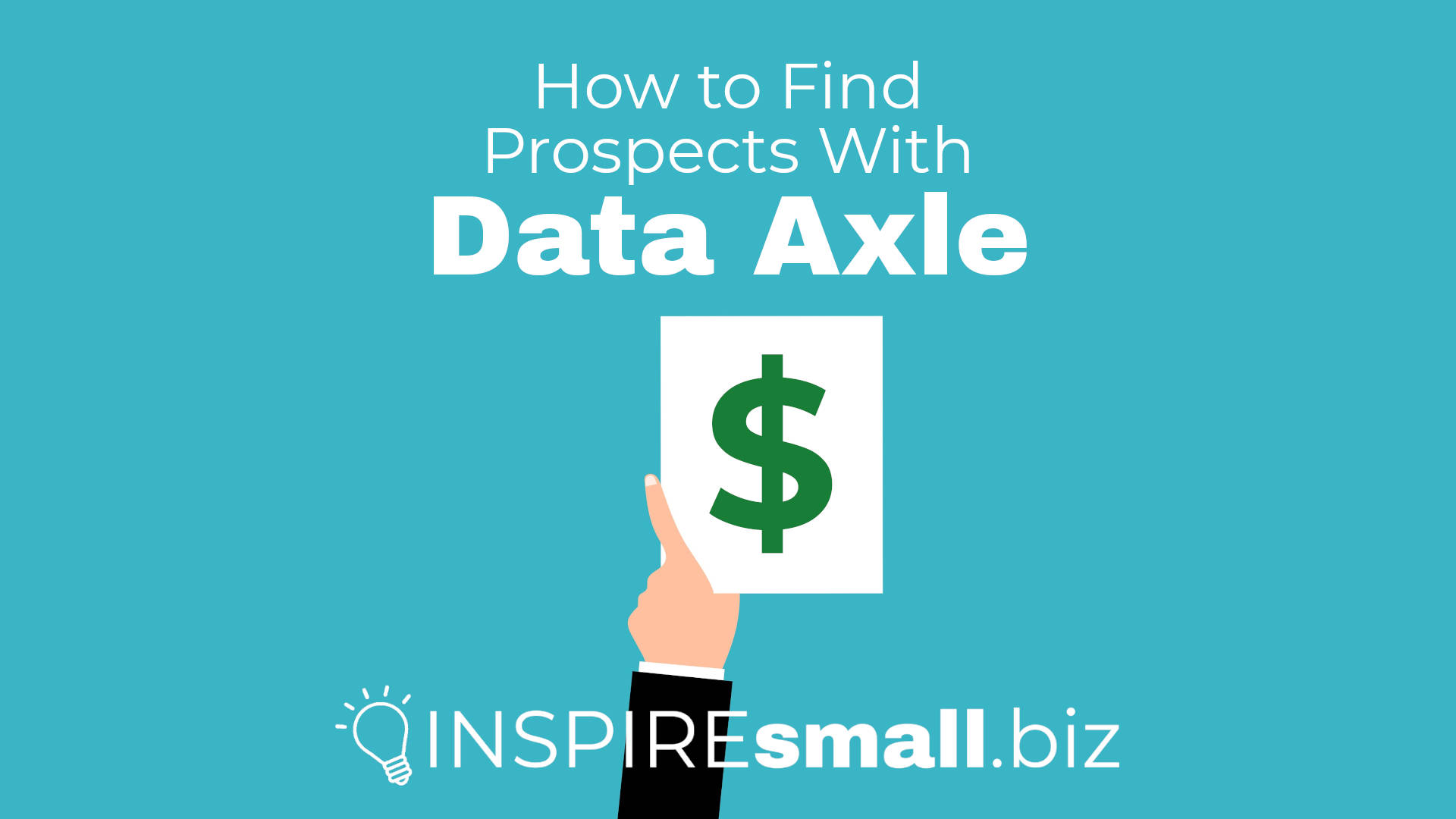Can I use this image for my business?
Beginner’s Guide to Creative Commons and the Public Domain
You’ve probably heard the terms Creative Commons and public domain when talking about copyright content and maybe you’re not sure what they mean or how to make use of them (or not to make use of them) when creating content for your business. In this blog, we’re looking at what Creative Commons and the public domain are, and how to use them for your business or online presence.
Creative Commons is itself a non-profit organization who maintains the creative commons (CC) licenses and promotes making it easier to share creative works1. They describe the CC licenses as answering the question ‘What can I do with this work?’ for anyone looking to reuse or modify the work in question.
Before we answer that question, I would like to make it clear that we are not lawyers, and this is not legal advice. If you have questions about your specific case, please consult a lawyer who works in this area. Now, back to the question.
What can I do with this work licensed under a CC license?
There are 6 versions of the creative commons license, depending on the license chosen2. The 6 licenses are made of options covering Attribution (BY), ShareAlike (SA), NonCommercial (NC), and NoDerivatives (ND). There is also a 7th option, which is CC-0, or the Public Domain Declaration3.
Attribution (BY)
All creative commons licenses contain the BY designation, by itself or with others, which means that to reuse this work, you must credit the creator. Many CC licensed content directories will provide a short attribution link that can be included with the shared content.
It is a requirement of reusing this work that the original creator is credited in the content. For example, if you use an image licensed CC BY in a video you share online, the attribution for the image should be included in the video itself and in the video description everywhere you post it.
The attribution part of the creative commons license is present in all the licenses except the CC0 Public Domain Declaration.
ShareAlike (SA)
The ShareAlike designation is optional and requires that any derivative works (works made using this work), also be licensed using the same license.
For example, if you use a work licensed CC BY-SA to create a new image, they you must make the new image also available under the CC BY-SA license.
NonCommercial (NC)
The NonCommercial designation is optional and limits that the work may only be used for non-commercial endeavors.
If you’re looking for works to use for your business, steer clear of works licensed with the NC terms. They are not licensed for your purposes without a separate license.
If you’re using the work for other purposes, then you may still be able to use the work. Make sure to check the complete terms for the license.
NoDerivatives (ND)
The NoDerivatives designation is optional and requires that the work may only be used as-is. It is not licensed to make derivative works or adaptations.
For example, sometimes we create images by combining stock imagery with original content into a new image. This would be considered a derivative work and would not be allowed by a stock image with ND license terms.
The 6 Creative Commons Licenses4,5,6,7,8,9
Together, the six (6) licenses allow for a variety of usages. Here are the combinations and you can see how some allow much more than others. Works licensed under the first three (3 – bolded) Creative Commons licenses allow for commercial uses. Works licensed under the last three (3) in this list are designated NonCommercial.
- CC BY – Attribution
- CC BY-SA – Attribution and ShareAlike
- CC BY-ND – Attribution and NoDerivatives
- CC BY-NC – Attribution and NonCommercial
- CC BY-NC-SA – Attribution, NonCommercial, and ShareAlike
- CC BY-NC-ND – Attribution, NonCommercial, and NoDerivatives
The 7th Creative Commons License: CC0 and the Public Domain
There is a 7th Creative Commons licensed terms CC03. The CC0 license3 specifies that ‘The person who associated a work with this deed has dedicated the work to the public domain by waiving all of his or her rights to the work worldwide under copyright law, including all related and neighboring rights, to the extent allowed by law.’
Are there any limits to how I can use something licensed CC0?
Yes, the Creative Commons licenses mainly cover copyright law, and per their Frequently Asked Questions10, ‘they do not license trademark or patent rights, or the publicity, personality, and privacy rights of third parties’.
Example images which meet the criteria include images with an identifiable person or persons, images with trademarks or patent information, images with personally identifiable information like someone’s street address, email address, or phone number, and more. Again, we are not lawyers. If you have specific questions, please consult a lawyer.
What is the Public Domain?
According to Rich Stim with the Stanford Copyright and Fair Use Center15, ‘The term “public domain” refers to creative materials that are not protected by intellectual property laws such as copyright, trademark, or patent laws. The public owns these works, not an individual author or artist. Anyone can use a public domain work without obtaining permission, but no one can ever own it.’
The four (4) ways most works enter the public domain include:
- The copyright expired. As of June 30, 2020, works published before January 1, 1925 are in the public domain.
- The copyright holder failed to renew their copyright or to apply it in the first place. Works published before 1964, must have had their copyright renewed. And, works published before 1978 had to have a copyright notice included in the work.
- The copyright holder dedicated the work (in print or through the CC0 designation) to the public domain. The copyright holder is giving up their copyrights to the work for the public to use.
- The item is not eligible for copyright protections. This includes all state and federal laws, and any work created by a federal government employee or officer.
Finding Creative Commons and Public Domain Works
There are many sites that host works posted as in the public domain. You can do a reverse image search in Google to check and see where the work originally appeared and that it is available with the Creative Commons license.
Here are some directories to help start your search. Please always check the specific license to make sure it will work for your needs.
Sounds and Audio
- Creative Commons Wiki Sound Directory Listings13 – https://wiki.creativecommons.org/wiki/Category:Sound_Directories
- Free Music Archive16 – https://freemusicarchive.org/
- Freesound17 – https://freesound.org/
- FreePD18 – https://freepd.com/
- YouTube Sound Effects Library19 – https://www.youtube.com/audiolibrary/soundeffects
- YouTube Audio Library20 – https://www.youtube.com/audiolibrary/music
- Legal Music for Videos21 – https://creativecommons.org/about/program-areas/arts-culture/arts-culture-resources/legalmusicforvideos/
Images
- Creative Commons Wiki Image Directory Listings14 – https://wiki.creativecommons.org/wiki/Category:Image_Directories
- Flickr22 – https://www.flickr.com/creativecommons/
- Pexels23 – https://www.pexels.com/creative-commons-images
- Unsplash24 – https://unsplash.com/
- Pixabay26 – https://pixabay.com/
All types
- Creative Commons Search Portal12 – https://search.creativecommons.org/
- Finding Creative Commons Media25 – https://guides.library.harvard.edu/c.php?g=310751&p=2072816
One important note about collections of public domain and other works, according to Rich Stim with the Stanford Copyright and Fair Use Center15, is that while each work belongs to the public, collections of public domain works may be protected by copyright … You are free to copy and use individual images but copying and distributing the complete collection may infringe what is known as the “collective works” copyright’.
Have you used works in the public domain or Creative Commons to promote your business? Tell us about it in the comments!
Research/References:
- Creative Commons. (n.d.). What We Do. Retrieved June 29, 2020, from https://creativecommons.org/about/
- Creative Commons. (n.d.). About CC Licenses. Retrieved June 29, 2020, from https://creativecommons.org/about/cclicenses/
- Creative Commons. (n.d.). CC0 1.0 Universal (CC0 1.0) Public Domain Declaration. Retrieved June 29, 2020, from https://creativecommons.org/publicdomain/zero/1.0/
- Creative Commons. (n.d.). Attribution 4.0 International (CC BY 4.0). Retrieved June 29, 2020, from https://creativecommons.org/licenses/by/4.0/
- Creative Commons. (n.d.). Attribution-ShareAlike 4.0 International (CC BY-SA 4.0). Retrieved June 29, 2020, from https://creativecommons.org/licenses/by-sa/4.0/
- Creative Commons. (n.d.). Attribution-Noncommercial 4.0 International (CC BY-NC 4.0). Retrieved June 29, 2020, from https://creativecommons.org/licenses/by-nc/4.0/
- Creative Commons. (n.d.). Attribution-Noncommercial-ShareAlike 4.0 International (CC BY-NC-SA 4.0). Retrieved June 29, 2020, from https://creativecommons.org/licenses/by-nc-sa/4.0/
- Creative Commons. (n.d.). Attribution-NoDerivatives 4.0 International (CC BY-ND 4.0). Retrieved June 29, 2020, from https://creativecommons.org/licenses/by-nd/4.0/
- Creative Commons. (n.d.). Attribution-NonCommercial-NoDerivatives 4.0 International (CC BY-NC-ND 4.0). Retrieved June 29, 2020, from https://creativecommons.org/licenses/by-nc-nd/4.0/
- Creative Commons. (June 12, 2020). Frequently Asked Questions. Retrieved June 29, 2020, from https://creativecommons.org/faq/
- Creative Commons. (June 12, 2020). Frequently Asked Questions – For Licensees (Section). Retrieved June 29, 2020, from https://creativecommons.org/faq/#for-licensees
- Creative Commons. (n.d.). Search. Retrieved June 29, 2020, from https://search.creativecommons.org/
- Creative Commons Wiki. (March 25, 2016). Sound Directories (for Creative Commons licensed content). Retrieved June 29, 2020, from https://wiki.creativecommons.org/wiki/Category:Sound_Directories
- Creative Commons Wiki. (June 25, 2015). Image Directories (for Creative Commons licensed content). Retrieved June 29, 2020, from https://wiki.creativecommons.org/wiki/Category:Image_Directories
- Stim, R. (n.d.). Welcome to the Public Domain. Retrieved June 30, 2020, from https://fairuse.stanford.edu/overview/public-domain/welcome/
- Free Music Archive. (n.d.). Free Music Archive. Retrieved July 2, 2020, from https://freemusicarchive.org/
- (n.d.). Freesound: a collaborative database of Creative Commons Licensed sounds. Retrieved July 2, 2020, from https://freesound.org/
- (n.d.). FreePD: This music is all licensed CC0 1.0 Universal Public Domain Dedication. Retrieved July 2, 2020, from https://freepd.com/
- (n.d.). YouTube Sound Effect Library. Retrieved July 2, 2020, from https://www.youtube.com/audiolibrary/soundeffects
- (n.d.). YouTube Audio Library. Retrieved July 2, 2020, from https://www.youtube.com/audiolibrary/music
- Creative Commons. (n.d.). Legal Music for Videos. Retrieved July 2, 2020, from https://creativecommons.org/about/program-areas/arts-culture/arts-culture-resources/legalmusicforvideos/
- (n.d.). Browse by Creative Commons License. Retrieved July 2, 2020, from https://www.flickr.com/creativecommons/
- (n.d.). Browse Creative Commons 0 Licensed Images. Retrieved July 2, 2020, from https://www.pexels.com/creative-commons-images
- (n.d.). Unsplash. Retrieved July 2, 2020, from https://unsplash.com/
- Blechner, A. (December 2, 2019). Finding Public Domain & Creative Commons Media. Retrieved July 2, 2020, from https://guides.library.harvard.edu/c.php?g=310751&p=2072816
- (n.d.). Pixabay. Retrieved July 2, 2020, from https://pixabay.com/



